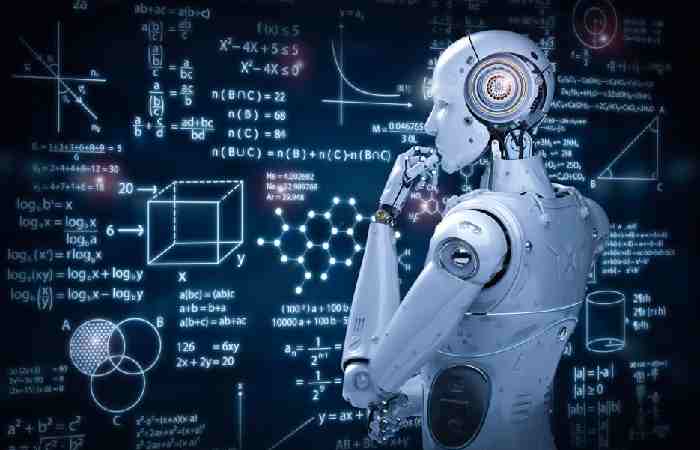Machine learning is a buzzword in today’s knowledge, expanding rapidly. However, we use machine learning in our daily lives without even realizing it, such as Google Maps, Google Assistant, Alexa, and so on. The following are some of the most popular real-world Machine Learning applications:

Table of Contents
1. Recognition of Images:
One of the best typical applications of machine learning is image recognition. It remains used to recognize objects, people, places, digital images, etc. Automatic friend tagging suggestion: This is a famous use case for image recognition and face detection.
Facebook offers an auto friend tagging suggestion feature. When we upload a photo with our Facebook friends, we automatically get a tagging suggestion with their names, and the technology behind it is fantastic. It is the face detection and recognition algorithm of machine learning.
It remains based on the Facebook project “Deep Face,” which is responsible for face recognition and person identification in images.
2. Recognition of Speech
When we use Google, we have the option to “Search by voice,” which falls below speech recognition and is a popular machine learning application.
Speech recognition, also identified as “Speech to text” or “Computer speech recognition,” is a process that converts voice instructions into text. Nowadays, machine learning algorithms remain widely used by various speech recognition applications. For example, Google Assistant, Siri, Cortana, and Alexa use speech recognition technology to respond to voice commands.
3. Traffic Forecast:
If we need to go somewhere new, we use Google Maps, which shows us the best path with the shortest route and predicts traffic conditions.
It predicts traffic conditions such as whether it is clear, slow, or heavily congested using two methods:
Vehicle location in real-time via Google Maps and sensors
At the same time, the average time has remained taken on previous days.
Everyone who uses Google Maps contributes to the app’s improvement. It collects information from the user and sends it back to its database to improve performance.
4. Product suggestions:
Machine learning is widely used for product recommendation by various e-commerce and entertainment companies such as Amazon, Netflix, and others. For example, because of machine learning, whenever we search for a product on Amazon, we start seeing advertisements for the same effect while browsing the internet on the same browser.
Google uses machine learning algorithms to know user interests and recommends products based on those interests.
Similarly, when we use Netflix, we find some recommendations for entertainment series, movies, and so on, which remain also generated using machine learning.
5. Autonomous vehicles:
Self-driving cars are one of the most exciting applications of machine learning. Machine learning is essential in self-driving vehicles. Tesla, the most well-known car manufacturer, is developing a self-driving car. Using an unsupervised learning method, it trains car models to detect people and objects while driving.
6. Filtering Email Spam and Malware:
When we receive a new email, it remains automatically classified as essential, usual, or spam. We always receive an important email with a significant symbol in our inbox and spam emails in our spam box, and the technology behind this is machine learning. Gmail employs the following spam filters:
- Filter for Content
- Filter for headers
- Filtering by general blocklists
- Filters based on rules
- Filters for permissions
Machine learning algorithms such as Decision Tree, Multi-Layer Perceptron, and Nave Bayes classifier remain used for email spam filtering and malware detection.
7. Personal Virtual Assistant:
Virtual personal assistants like Google Assistant, Alexa, Cortana, and Siri exist. They assist us in finding information using our voice commands, as the name implies. These supporters can help us in various ways simply by listening to our voice commands, such as playing music, calling someone, opening an email, scheduling an appointment, etc.
Machine learning algorithms play an essential role in these virtual assistants.
These assistants record our voice commands, send them to a cloud server, decode them using ML algorithms, and act accordingly.
8. Detecting Online Fraud:
Machine learning makes our online transactions safer and more secure by detecting fraudulent transactions. For example, when we conduct online marketing, there are several ways for fraudulent transactions, such as fake accounts, fake ids, and stealing money in the middle of a transaction. To identify this, the Feed Forward Neural Network assists us in determining whether the marketing is genuine or fraudulent.
The output of each genuine transaction remains converted into some hash values, which become the input for the next round. A specific pattern for each open transaction changes for the fraud transaction; thus, it detects it and makes our online transactions more secure.
9. Trading on the stock exchange:
In the stock market, machine learning remains widely used. Since there is always the risk of share price fluctuations in the stock market, this machine learning’s long short-term memory neural network remains used to forecast stock market trends.
10. Medical Condition:
Machine learning is used in medical science to diagnose diseases. As a result, medical skill is rapidly evolving and capable of creating 3D models that can predict the precise location of lesions in the brain.
It facilitates the detection of brain tumors and other brain-related diseases.
11. Language Translation by Machine:
Now, if we stay in a new place and are unfamiliar with the language, it is not a problem; machine learning also assists us by converting the text into our known languages. This feature remains provided by Google’s GNMT (Google Neural Machine Translation), a Neural Machine Learning that translates the text into our familiar language and is known as automatic translation.
Automated translation technology is a sequence-to-sequence learning algorithm used in conjunction with image recognition to translate text from one language to another.
Conclusion:
This book discusses machine learning applications in artificial intelligence. Human language, heterogeneous and streaming data, unmanned systems, neural information processing, marketing, and social sciences, bioinformatics and robotics, and other topics are covered.
Also read: What Is Machine Learning? Definition, Types
Related posts
Featured Posts
Brooks Launch 8 Women
Brooks Launch 8 Women: The Brooks Launch 8 is an impartial lightweight cushioned trainer. The Launch 8 can be a quick…
What is Marketing Icon
Marketing Icon: A marketing Icon is everything in the marketing world. If you want to capture marketing budgets, marketing with…

